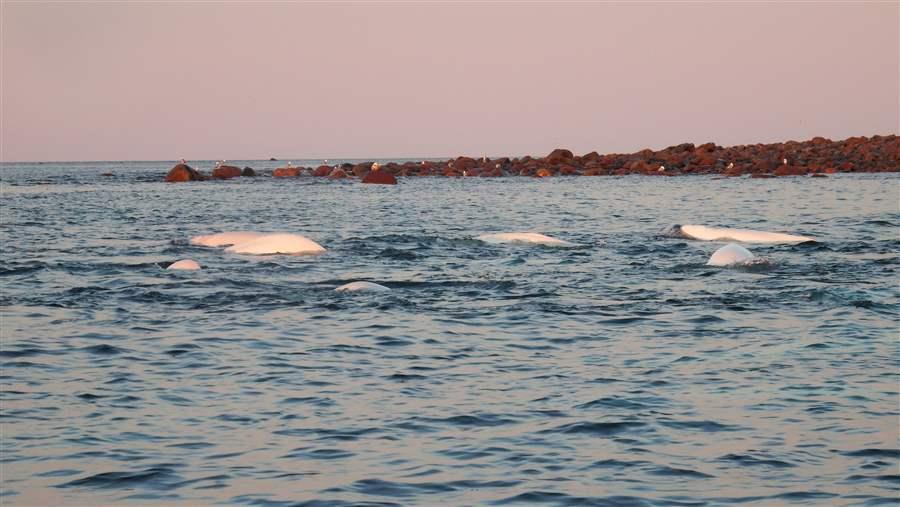Killer Whale Attack Altered Belugas Behavior in Hudson Bay
Melting Arctic sea ice gave predators access to sensitive breeding area, study shows

Melting Arctic sea ice gave predators access to sensitive breeding area, study shows
© Jeremy Davies/The Pew Charitable Trusts
A killer whale attack in 2012 on beluga whales in Canada’s western Hudson Bay caused the belugas to temporarily flee their summer habitat and is raising new questions about how climate change will affect future populations, according to a study published in the peer-reviewed journal Canadian Field-Naturalist.
The trend of earlier spring ice melt has increased the number of killer whales in Hudson Bay and allowed them access to the shallow estuaries where belugas breed, give birth, and feed in summer. Killer whales are about twice the size of belugas and are known to also prey on bowhead whales, walruses, seals, and other marine mammals.
“Killer whales are a fairly new predator in Hudson Bay, so we don’t know what overall impact they will have on belugas,” said Kristin Westdal, co-author of the study and a marine biologist with The Pew Charitable Trusts’ Oceans North Canada program.
Westdal was one of five scientists who studied the attack, which took place at high tide near the mouth of the Seal River in August 2012. They interviewed experienced guides and tourists on a nearby boat who first noticed two groups of killer whales, including three large males, swimming offshore in about 150 meters (500 feet) of water.
All of a sudden, four of the killer whales swam closer to shore and began chasing the belugas, which thrashed and fled into water that was less than 2 meters (6.5 feet) deep. Eventually the belugas clumped together in an attempt to withstand the attack, which lasted more than an hour. There was no evidence that any belugas died.
Three weeks earlier, Westdal and other scientists had tagged six belugas in the Seal River with satellite transmitters as part of a larger study of how the whales use the estuaries in this region. That allowed the team to track the whales’ behavior during and after the attack, and compare it to earlier movements.
The researchers found that the belugas reduced their range in the hours after the assault, then in the days immediately following swam three times as far as they had before the attack, moving north to evade the killer whales before returning to the mouth of the Seal River.
Such an increase in movement “takes a lot of energy during a time when belugas are raising their calves,” Westdal said. “Repeated attacks could affect the health of this population in the long run.”
The study also points to the need to protect a wider swath of beluga habitat if the whales are to thrive.
“Our research found that belugas may be ranging farther along the western coast of Hudson Bay than we previously suspected in the summer season. This information is important when it comes to conservation measures that are being considered,” she said.
The Oceans North Canada team is working with the Manitoba provincial and federal governments to establish a marine conservation area in western Hudson Bay that could help protect this sensitive habitat and the marine mammals that depend on it.
Steve Ganey is a senior director for land and ocean programs at The Pew Charitable Trusts.







